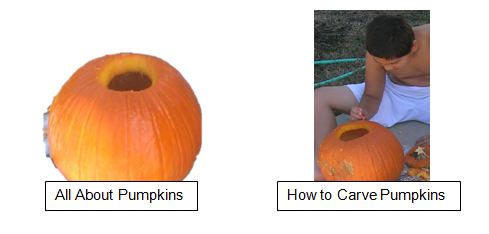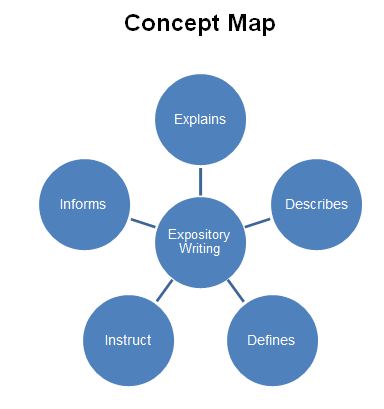Informational Writing Content Module
BACK TO Content Modules
Contents |
Plot the Course
CCSS.ELA-Literacy.CCRA.W.2 Write informative/explanatory texts to examine and convey complex ideas and information clearly and accurately through the effective selection, organization, and analysis of content.
- CCSS.ELA-Literacy.CCRA.W.4 Produce clear and coherent writing in which the development, organization, and style are appropriate to task, purpose, and audience.
- CCSS.ELA-Literacy.CCRA.W.5 Develop and strengthen writing as needed by planning, revising, editing, rewriting, or trying a new approach.
- CCSS.ELA-Literacy.CCRA.W.6 Use technology, including the Internet, to produce and publish writing and to interact and collaborate with others.
- CCSS.ELA-Literacy.CCRA.W.10 Write routinely over extended time frames (time for research, reflection, and revision) and shorter time frames (a single sitting or a day or two) for a range of tasks, purposes, and audiences.
* Note: While W.2 is the main standard associated with this module, standards 4, 5, 6, and 10 should be considered when planning instruction.
The rationale
The ability to communicate effectively is a necessary lifelong skill. In fact, "writing skill is a predictor of academic success and a basic requirement for participation in civic life and in the global economy" (Graham & Perin, 2007, p.3). According to Graham and Perin, "all students need to become proficient and flexible writers" (2007, p.7). However, writing instruction has typically been neglected (National Commission on Writing, 2003, p.9). With the recent adoption of the Common Core State Standards (CCSS; National Governors Association [NGA] & Council for Chief State School Officers \[CCSSO\], 2010) in forty-five states, there is a renewed emphasis on writing instruction. The CCSS specify three main types of writing: narrative, expository, and argumentative. This module will focus specifically on expository writing.
Module Goal
The goal of this module is to provide detailed information on expository writing to teachers of students with disabilities at the elementary and middle school level. This module aims to provide teachers with a general overview of these concepts as well as teaching suggestions so that a teacher can begin to plan instruction for these concepts. Additionally, this module provides instructors with potential adaptations and modifications to consider when designing materials and instruction for students with severe disabilities.
Module Objectives
After viewing the content module, teachers will:
- Develop understanding of essential principles of effective writing instruction that encourages both the writing process and expository writing products.
- Be familiar with expository writing features and instructional strategies to teach students to effectively develop expository writing skills.
This module is organized using the following sections: Time for Take Off, Floating on Air, and Prepare for Landing. Key vocabulary is provided in the "Time for Take Off" section of the module. Connections to the Common Core State Standards and PowerPoint presentations containing information and instructional suggestions for teaching about expository writing are shared in the "Floating on Air" component. In "Prepare for Landing", strategies to review, reinforce, and apply expository writing to real world connections are provided.
Time for Take Off
Understanding the vocabulary used with expository writing is important for both teachers and students in planning and implementing writing lessons. As a teacher, knowing and using the terms not only ensures your instruction stays true to the content, but also will help with collaborating with other writing teachers or literacy experts. When choosing which vocabulary to teach, it is most important that the teacher selects the most salient, important, or most frequently used vocabulary for each lesson.
Below you will find a list of vocabulary related to this module. It may or may not be necessary to provide instruction for all terms as students may have learned them previously. If you are a secondary teacher and are not confident your students have been taught these vocabulary terms, you may want to review and teach those unknown terms during the focus and review section of your lesson plan.
While providing vocabulary instruction, you may consider including pictures or objects to make the instruction more concrete for students with disabilities (See Ideas to support vocabulary learning below).
Vocabulary
- main idea - the most important idea in the text
- details - specific smaller elements that are part of a larger work
- key word - essential or significant words related to the text
- text structure - ways in which information within a text is organized to convey the content
Text structure vocabulary
- cause - something that brings about an action or result
- effect - occurs as a result of the cause
- description - providing information about a given topic
- sequence - a particular order
- problem - something needing to be solved
- solution - a way to solve or overcome the problem
- compare - see how things are similar
- contrast - see how things are different
Sample text feature vocabulary
- headings - like a title at the beginning of the text
- subheadings - subtitles throughout the text that break it into smaller sections
- glossary - a list of key words found in the text
- table of contents - a list of chapters usually found in the beginning of a text
- index - a list of topics usually found in the back of a text
- captions - explanation or description of a given diagram or image
- bold - darker font made to stand out to the reader
- italics - slanted style font made to stand out to the reader
- labels - descriptive or identifying word or phrase
- diagrams - a drawing, sketch or chart that makes the information easier to understand
- cutaways - showing the top or outside cutaway so the inside parts can be seen
Idea to support vocabulary learning
Use visual representations or actions to explain expository writing and related terms. For example, the following images may be shared to teach the types of expository writing including 'all about' and 'how-to'.
Floating on Air
Before you can begin teaching your students about expository writing, it is important that you first have a deep understanding of the information. Some of the concepts may be familiar to you. Below is a list containing Standard W.2 and SL.4 from the Common Core State Standards for grades K-8. You will also find a series of PowerPoint presentations containing information, examples, and instructional suggestions below the chart.
ELA Common Core State Standard W.1 and SL.4: Narrative Writing - Grades K-8
| K | W.K.2 Use a combination of drawing, dictating, and writing to compose informative/explanatory texts in which they name what they are writing about and supply some information about the topic.
SL.K.4 Describe familiar people, places, things, and events and, with prompting and support, provide additional detail. |
| 1 | W.1.2 Write informative/explanatory texts in which they name a topic, supply some facts about the topic, and provide some sense of closure.
SL.1.4 Describe people, places, things, and events with relevant details, expressing ideas and feelings clearly. |
| 2 | W.2.2 Write informative/explanatory texts in which they introduce a topic, use facts and definitions to develop points, and provide a concluding statement or section.
SL.2.4 Tell a story or recount an experience with appropriate facts and relevant, descriptive details, speaking audibly in coherent sentences. |
| 3 | W.3.2 Write informative/explanatory texts to examine a topic and convey ideas and information clearly.
SL.3.4 Report on a topic or text, tell a story, or recount an experience with appropriate facts and relevant, descriptive details, speaking clearly at an understandable pace. |
| 4 | W.4.2 Write informative/explanatory texts to examine a topic and convey ideas and information clearly.
SL.4.4 Report on a topic or text, tell a story, or recount an experience in an organized manner, using appropriate facts and relevant, descriptive details to support main ideas or themes; speak clearly at an understandable pace. |
| 5 | W.5.2 Write informative/explanatory texts to examine a topic and convey ideas and information clearly.
SL.5.4 Report on a topic or text or present an opinion, sequencing ideas logically and using appropriate facts and relevant, descriptive details to support main ideas or themes; speak clearly at an understandable pace. |
| 6 | W.6.2 Write informative/explanatory texts to examine a topic and convey ideas, concepts, and information through the selection, organization, and analysis of relevant content.
SL.6.4 Present claims and findings, sequencing ideas logically and using pertinent descriptions, facts, and details to accentuate main ideas or themes; use appropriate eye contact, adequate volume, and clear pronunciation. |
| 7 | W.7.2 Write informative/explanatory texts to examine a topic and convey ideas, concepts, and information through the selection, organization, and analysis of relevant content.
SL.7.4 Present claims and findings, emphasizing salient points in a focused, coherent manner with pertinent descriptions, facts, details, and examples; use appropriate eye contact, adequate volume, and clear pronunciation. |
| 8 | W.8.2 Write informative/explanatory texts to examine a topic and convey ideas, concepts, and information through the selection, organization, and analysis of relevant content.
SL.8.4 Present claims and findings, emphasizing salient points in a focused, coherent manner with relevant evidence, sound valid reasoning, and well-chosen details; use appropriate eye contact, adequate volume, and clear pronunciation. |
Check for understanding. Click on the PowerPoints below.
Effective Writing Instruction powerpoint
Great! Now that you have viewed the PowerPoint presentations, the next section will provide some ideas to consider when planning for Universal Design for Learning.
Sharing the Sky
UNIVERSAL DESIGN FOR LEARNING
| Visual Impairment or Deaf/Blind | Physical Impairment:
Little/ No Hand Use |
Lacks Basic Concepts | Motivational/ Attention Issues | |
| Representation | Engage in oral rehearsal of expository writing; use a talking device such as an avatar; use large font to type; use online tools to create graphic organizers (i.e., Readwritethink.org); use picture cards and graphic organizers to organize expository piece; digital writing modes (MovieMaker, iMovie). | Student scans an array of possible options and uses a switch to select topic, main idea, details, etc.; use computer representation that can be manipulated with switch; place key aspects on a slant board or eye gaze board; create an exercise in the classroom that the student can walk or ride in wheelchair to organize content for expository writing. | Offer scaffolding to assist students with writing. Use graphic organizers and sentence starters. Offer images and illustrations as springboards for ideas. Read text with basic structure to show examples to students. After reading, encourage students to complete a backwards plan to organize expository writing. | Use motivating objects to research and write about (i.e., puppets or student's favorite character, object, etc.). Incorporate technology including computer representations, videos, animations, and talking avatar. Allow students to self-select writing paper, tools, and topics for writing. |
| Expression | Student selects topic from limited options (i.e., offer 2-3 choices); use voice output devices for student to select aspects such as topic, main idea, details, introduction, and conclusion; teach tangible symbols for these components. | Uses a switch to indicate key aspects such as topic, main idea, details, introduction, and conclusion from a limited selection; uses an eye gaze board to select key aspects; uses a blink response to select key aspects from a limited selection; phrase questions so that they require a "yes/no" response, these can easily be answered using an eye gaze, head turn, two switches, etc. | Student selects pre-made cards with key aspects such as topic, main idea, details, introduction, conclusion versus writing them; writing is done after a model; student answers "yes/no" questions. | Have students write using drawings, interactive computer programs, acting out with props, etc. |
| Engagement | Teach students to use their hands to scan objects; use talking avatars or prompts to elicit student writing; allow students to select their writing materials (i.e., paper, writing utensils) and online websites to generate writing; encourage students to develop writing that is familiar and reinforcing to students. | Use a computer with AT where the student can click to select various aspects of expository writing; use cards that are large enough to accommodate the movements that the student is able to make; pair student with another student without a physical impairment and have them work together to research, write and discuss writing. | Student uses websites and listening centers that read aloud text. Use puppets and objects to develop writing. Provide students with real experiences to inspire writing (i.e., provide information about themselves for biography writing, research a topic of interest, connect to a field trip, etc.) | Create games in which students interact with partners to match details with appropriate main ideas and topics.
Create text and scenarios that involve the students and their interests and experiences. |
Prepare for Landing
Below you will find ideas for linking expository writing to real-world applications, the college and career readiness skills addressed by teaching these concepts, module assessments for teachers, sample general education lesson plans incorporating Universal Design for Learning framework, blog for teachers to share their ideas, and a place to upload and share lesson plans from teachers who completed this module. One way to help assist in a special educator's development within this curricular area is through collaboration with other teachers in your building. Often these skills are practiced outside of an ELA classroom in other curricular areas as well as during everyday tasks. Some activities with real world connection include:
- Associate expository writing skills learned in class to wide reading and real world texts by teaching students to read as writers to notice author's craft. This allows the students to apply the learning to real reading experiences. This supports students understanding of the relevance of content and will increase comprehension and writing skills.
- Encourage students to engage in inquiry based research.
- Encourage students to self-select topics to write about based on interest and topics they are passionate about. This will increase motivation and engagement in the writing process.
- Using and discussing key vocabulary words that might not be common in students' everyday talk can begin to extend students' oral language skills which will also enhance their writing skills.
In addition to the real-world applications of these concepts, skills taught within this content module also promote the following college and career readiness skills.
Communicative competence Students will increase their vocabulary to include concepts related to "expository writing." Specifically, they will be learning concepts such as: "main idea," "details," and "introduction/conclusion."
Fluency in reading, writing, and math Students will have opportunities to enhance their writing skills and comprehension as their awareness of expository writing increase. By having stronger knowledge about expository writing, students will be able to develop focused, well-organized, and detailed pieces of writing. They will also enhance their reading abilities as reading and writing are reciprocal processes.
Age appropriate social skills Students will engage in peer groups to discover and discuss expository texts, engage in research, develop and share their expository writing. Independent work behaviors Students will engage in independent writing. They will have an increased understanding of expository writing through opportunities to engage in authentic writing experiences.
Skills in accessing support systems At times, students will need to ask for assistance to complete activities related to "expository writing" which will give them practice in accessing supports. Students will gain practice asking for help with expository writing as needed. They can ask a peer to complete the physical movements of the tasks they are not able to do themselves. Be sure to teach students to ask versus having items or supports automatically given to them.
In addition to collaborating with other educational professionals in your building, the following list of resources may also help provide special educators with ideas for activities or support a more thorough understanding of the concepts presented in this content module.
Additional Resources
Empowering Writers (2012). Retrieved July 14, 2013 from http://empoweringwriters.com/improving-student-writing/expository-writing/. This resource provides educators with an explanation of exactly what expository writing is, the specific skills that are involved in expository writing, what teachers can expect in expository writing from student authors, and how parents can help in the process.
National Geographic Kids (2013). Retrieved June 16, 2013 from http://kids.nationalgeographic.com/kids/stories/. On this site, visit the news tab and have students create various products using the information they gather.
National Writing Project (2013). Retrieved June 23, 2013 from http://www.nwp.org/. The National Writing Project provides articles, lessons, support and professional development in the area of improving writing and learning across the nation's schools.
Time for Kids (2013). Retrieved June 16, 2013 from http://www.timeforkids.com/news. When viewing news stories on this site, have students determine what information they are gathering from the article and even what the author's point of view is: to inform, to entertain, to clarify, etc.
ReadWriteThink (2013). Retrieved June 29, 2013 from http://www.readwritethink.org/professional-development/strategy-guides/persuasive-writing-30142.html. This site provides teachers with strategies on ways to get students connected with expository writing allowing them to express their needs and desires.
ReadWriteThink (2013). Retrieved June 29, 2013 from http://www.readwritethink.org/professional-development/strategy-guides/developing-persuasive-writing-strategies-30965.html. This resource guide focuses on Developing Expository Writing Techniques to use in your classroom as you guide students through the understanding of using expository writing.
References
Calkins, L, Ehrenworth, M., & Lehman, C (2012). Pathways to the common core: Accelerating achievement. Portsmouth, NH: Heinemann. This text allows teachers: to understand what the Common Core Standards say, suggest, and do not say; recognize the guiding principles that support the reading and writing standards; identify how the Common Core's infrastructure supports a spiraling K-12 literacy curriculum; and examine the context in which the CCSS were written and are being unrolled.
Carroll, J. A., &Wilson, E. E. (2008). Acts of teaching: How to teach writing. Portsmouth, NH: Heinemann. This text will meet the needs of anyone teaching writing as it provides strategies on how writing is a mode of learning across all disciplines and grade levels. Other topics in this text include: students; shifts; skills for the global age; the writing process and assessment; and how to teach grammar within the writing process.
Common Core State Standards Initiative. (2010). Common Core State Standards: Preparing America's students for college and career. Retrieved January 2, 2013 from http://www.corestandards.org/assets/Appendix_C.pdf
Gallagher, C.W. and Lee, A. (2008). Teaching writing that matters. New York, NY: Scholastic. This text offers tools and projects that motivate adolescent writers and encourages student growth through reflection on writing, purposeful and audience-aware projects, and the support of a writing community.
Graham, S., & Perin, D. (2007). Writing next: Effective strategies to improve writing of adolescents in middle and high schools – A report to Carnegie Corporation of New York. Washington, DC: Alliance for Excellent Education.
The National Commission on Writing in America's Schools and Colleges. (2013, April). The neglected "R": The need for a writing revolution: The College Board. http://www.collegeboard.com/prod_downloads/writingcom/neglectedr.pdf
Paez Wiesen, M. (2012). A quick guide to teaching informational writing, grade 2 (Workshop Help Desk). Portsmouth, NH: Heinemann. This unit of study guides teachers through the entire writing process with the focus of informational writing, while addressing the wide range of learners found in the second grade classroom.
Ray, K. W. (2006). Exploring inquiry as teaching stance in the writing workshop. Language Arts, 83(3). An inquiry approach to genre study that repositions curriculum as the outcome of instruction rather than as the starting point.
Module Assessments
Below are links to assessments for the purpose of self-checking your understanding of the content in this module. After answering the assessment questions, you may want to review the key to check your work.
Informational Writing Assessment
Informational Writing Assessment Key
Sample General Education lesson plans
Expository Writing Lesson with UDL pdf
Nixon, J. (2010). Retrieved July 7, 2013 from http://www.eastnoble.net/files/_efBQD_/c96212263d8de3063745a49013852ec4/All_About_Books_Grades_K-2-_whole_study.pdf. This resource provides informational writing lessons (broken into two parts) for kindergarten through second grade. Part one focuses on writing "all-about" books and part two concentrates on the study of "how-to" writing.
ReadWriteThink (2013). Retrieved July 1, 2013 from http://www.readwritethink.org/classroom-resources/lesson-plans/about-town-using-brochures-856.html. "All About Our Town" allows students to discover their town and become familiar with print and nonprint resources that people gather information from. By looking at informational tools, such as brochures, students are able to make connections on purposes on why people read and write.
ReadWriteThink (2013). Retrieved July 14, 2013 from http://www.readwritethink.org/classroom-resources/lesson-plans/cooking-with-words-creating-1018.html. Third grade through fifth grade students are put to the test during this lesson by tapping into their understanding of word choice.
Writing A-Z (2013). Retrieved July 14, 2013 from http://www.writinga-z.com/razwritingweb/topic/lessons/genres/expository?id=5. This link provides a variety of lessons focusing on five different types of expository writing with materials to meet the needs of students ranging from beginning to fluent.
Writing Fix (2012). Retrieved July 10, 2013 from http://writingfix.com/genres/informative.htm. This resource provides six model lessons with a mentor text, focus trait and support trait.
Adapt the following general education lesson plan; adapt, and upload. These lesson plans may be shared with higher education professionals developing strategies to provide meaningful academic instruction in ELA to students with severe disabilities.







